Five fall insect invaders
These six-legged overwintering zombies are a nuisance around homes, but there are a few things you can do send them elsewhere
As the days grow shorter and the night temperatures drop, a group of insects begin to appear on the walls and windows of homes across Michigan. Some homes are not bothered, while others see more than one of this troupe of invaders.
These fall trespassers are called overwintering insects. They spend the winter as dormant adults, sleeping away the cold months. If the place they chose to overwinter was the correct temperature and they did not stay active or freeze to death, they would be ready to go back to the greening trees in the spring. Their resting area requires that the temperature stays between 40 to 50°F for hibernation. That’s usually the spot between the inside and outside walls of the house. Being mere insects, they often make the wrong choice and end up in the living area of the house instead of that wall void. None of them are harmful to humans, pets or the house. They just rate high on the Aggravation Scale.
Throw them out or keep them out
Using insecticides to spray these annoying pests is often ineffective. As their life processes slow for hibernation, they are not easily killed by pesticides. But manually removing them by picking them up or sucking them up with a vacuum cleaner can get rid of the ones that have gotten indoors. They are easy to catch because they are so sluggish.
But the best plan is to exclude them where they are coming in. Look at the south and west sides of the house first because these are the sunniest. The insects seem to enjoy the heat reflected from light-colored siding and bounced off large expanses of glass. Many of these insects will gather on the warm sides and slowing wriggle their way around windows, doors and other openings. Check caulking and sealing in areas where they could enter. These insects fit nicely into a crack the thickness of a credit card, so an opening does not have to be large. The big invasion months are usually September and October. Completing repairs before their arrival helps limit invasion problems.
The first four insects have proven track records for home invasion. But like all insect populations, they rise or fall every year. These home invades all carry their little “Google calendars” to remind them when to appear each fall. Many Michigan residents have had experience with the first two.
Multicolored Asian ladybeetle (Harmonia axyridis) is an exotic insect from Asia and one of the newest of the fall invaders. They vary in color from pale tan to deep reddish orange and from no spots to many spots.
Boxelder bug (Leptocoris trivittatus) while native, is a problem in areas that have boxelder trees. But removing the trees may not help as there are often plenty of other boxelder trees in the neighborhood. They are black with red edges on the wings.
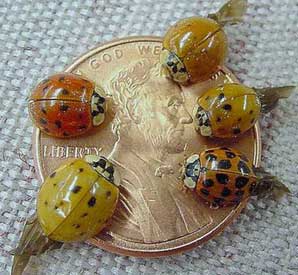
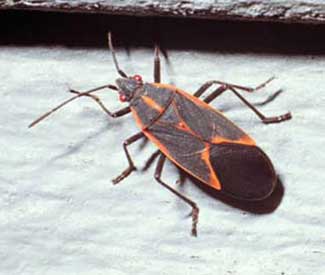
Left, Multicolored Asian ladybeetle. Photo credit: MSU Diagnostic Services. Right, Boxelder bug.Photo credit: MSU Diagnostic Services
Cluster flies (Pollena rudis) are considered to be a European native. These black, large, hairy flies complete part of their life as a parasite of earthworms. They are found in groups which gives them their common name.
Western conifer seed bug (Leptoglossus occidentalis) is a native insect found near evergreens that produce cones. They feed on the inside of the conifer seeds. Notice the wide lower hind leg. This is the easiest way to tell them from the brown marmorated stink bug.
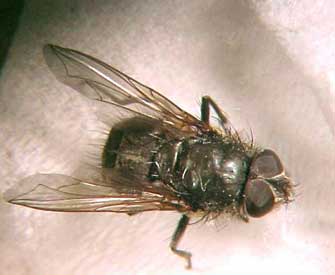
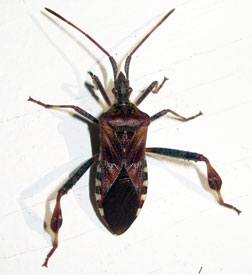
Left, Cluster fly. Photo credit: MSU Diagnostic Services. Right, Western conifer seed bug. Photo credit: Futureman1 @ flickr.com
Brown marmorated stink bug (Halyomorpha halys) a native of Asia, is the newest overwintering insect in Michigan. When hit or smashed, they have an incredibly vile odor. Look at the hind leg to distinguish it from the seed bug. It will be very rare to find one as this is a new invasive species in our state and a serious pest for farming. To learn more about this new pest, visit MSU’s BMSB website.
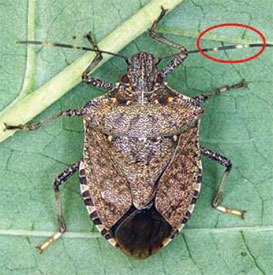
Brown marmorated stink bug. Photo credit: Rutgers University
Related source:



 Print
Print Email
Email

